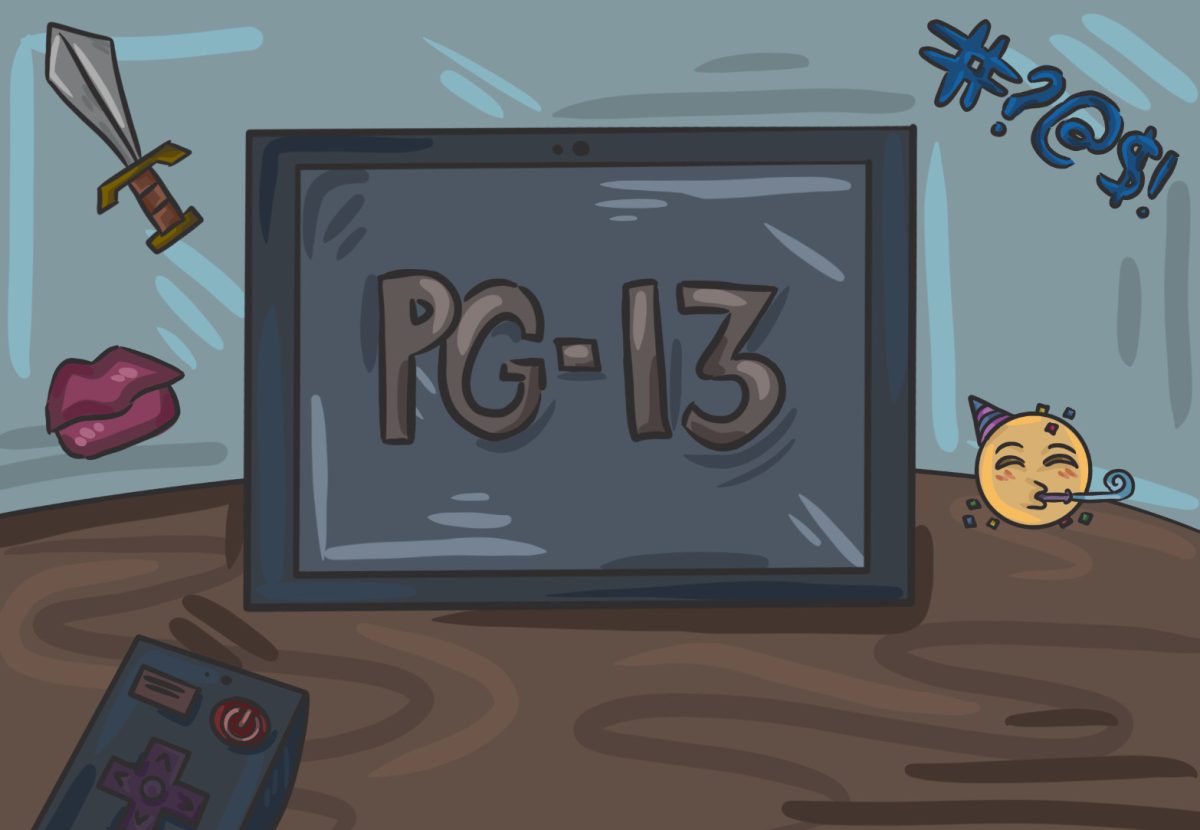Before July of 1984, General Audience (G), Parental Guidance Suggested (PG) and Restricted (R) rated movies were the three movie categories with movies generally ranging between a dicey PG or a light R-rated movie.
The No Children under 17 admitted rating (NC-17) emerged in 1990, but by far the most common rating has been Parent Strongly Cautioned (PG-13). Eighty percent of movies from 2010 to 2024 were rated PG-13 according to Looper. The PG-13 rating forces the Motion Picture Association (MPA) to dive into the gray area regarding discretion for audiences.
Society’s sensitivity to topics alter through time, meaning the MPA has the responsibility to react accordingly to these changes when rating movies. For example, smoking was added as a factor in the rating process which was illustrated by Film Ratings in 2007. These ever changing adjustments leave a starkly different definition of PG-13 from the ‘90s to the 20th century.
PG movies including “Gremlins 1” (1984) and “Indiana Jones and the Temple of Doom” (1984) sparked conversation revolving around movie ratings. The more recent “Gremlins 2” movie that was released in 1990 is PG-13, illustrating the shift in the perception of film. These two films led to controversy regarding if the movies were suitable for a younger audience due to the topics of action, uneasy animatronics and mature topics. Screen Rant states how “parents reportedly walked out of screenings, children in tow, and complained that they were not given adequate warning about the levels of violence in these films.”
When a cinematic piece is up for review, the MPA evaluates the film on violence, sexual content/nudity, profane language and movie genre. The process is broken down further based on implication, briefness, violence motives and context.
According to Motion Pictures, 81% of parents feel like the movies they have watched in the past year have been rated appropriately. Sixty-two percent of people who disagree with ratings believe the rating was too soft.
“Eighth Grade” (2018) and “The Spectacular Now” (2013) on the other hand have been criticized for their R ratings. While there is language, sexual themes and mature topics, the rating does not align with the so-called intended audience. Movies about teenagers are unobtainable to watch by teenagers themselves despite the depicted accuracy of being an adolescent.
Casual smoking, gore and mature topics would not be remotely appropriate for a family movie night in the modern day. While “Jaws” in 1975 was rated PG, there is no doubt that movies today with similar themes would have a stricter rating.
Cinematography has been a way to connect people across the globe through entertainment, emotion and information. As people’s views on topics shift throughout time, movie ratings adjust with the change to assure movies are timeless. PG-13 is a necessary addition to the MPA rating system to prevent discourse of exposing inadequate audiences to mature topics.










